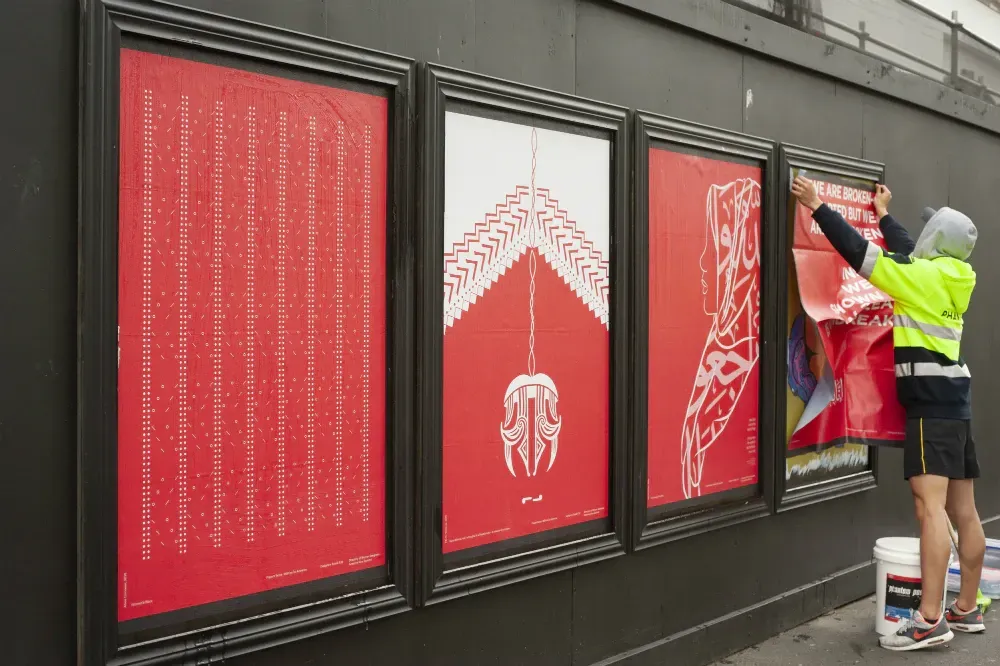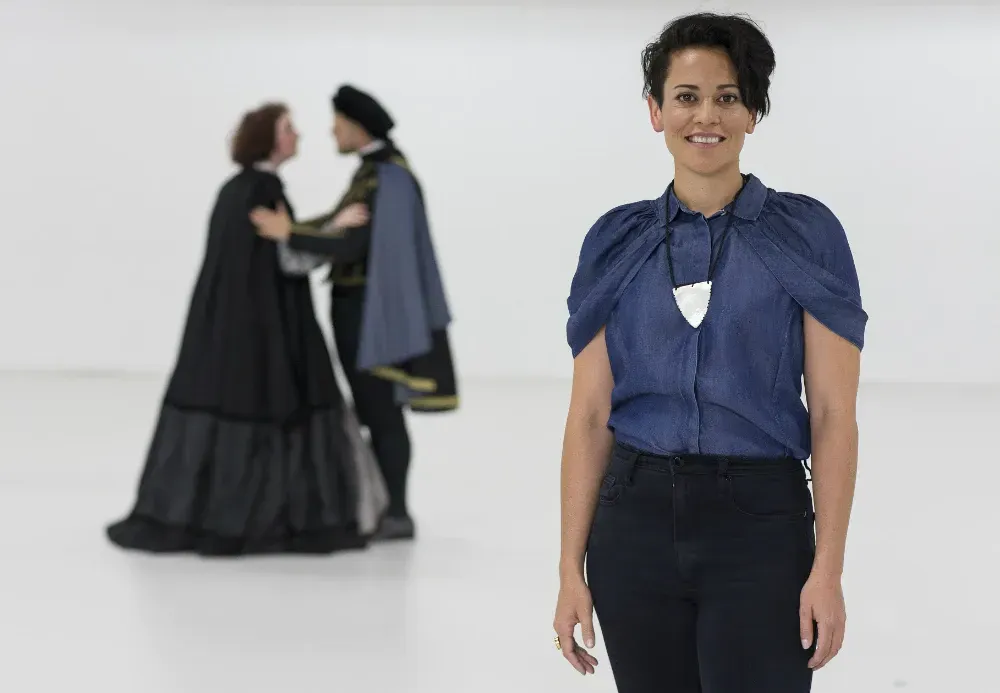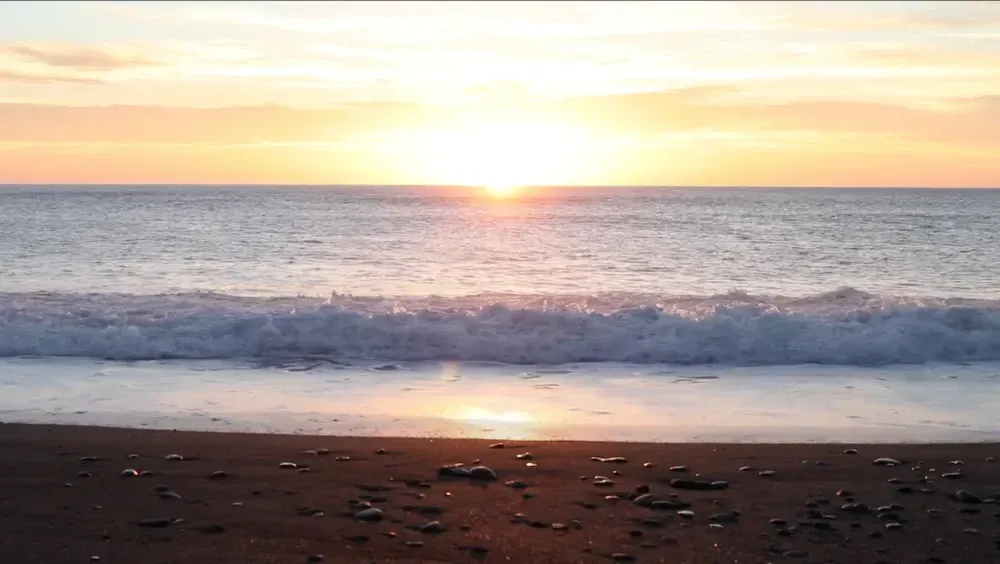Rock Out Dudes!
Written by
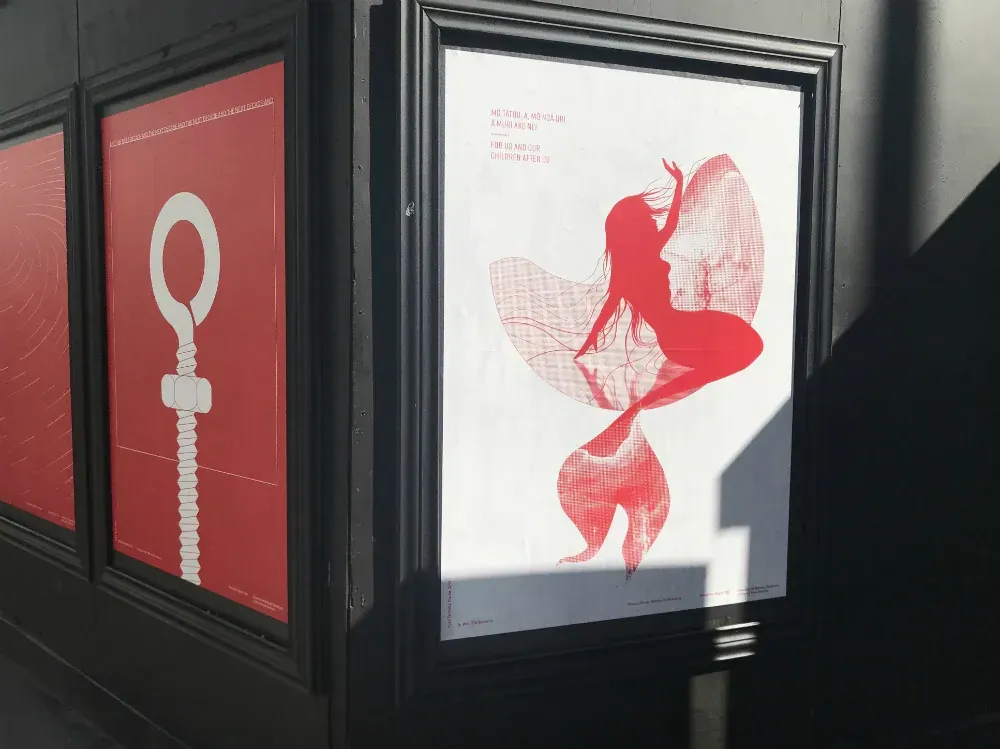
A call for change
While women make up close to 75 percent of those completing fine arts degrees, they make up less than 40 percent of the representation in New Zealand dealer galleries. That’s the finding of Anna Knox, who collated statistics from 2000 to 2018 in her report on gender representation in the art world, released Tuesday on Spinoff Art. Knox records encouraging signs of change for representation of women in public galleries (much higher here than in the US over the same time period), but notes that women have had less solo public shows over the period.
There’s lots to get people talking here, and spitting, including Knox’s observation that women are particularly underrepresented by male dealers. “One male dealer currently represents five women and 28 men,” she writes. “This suggests that for female artists to really have equal opportunity, male dealers must change their approach to representation.”

It’s just as bad at Auckland Art Gallery Toi o Tāmaki!, poster produced by Auckland Art Gallery Toi o Tāmaki in collaboration with the Guerrilla Girls, 2019.
Knox’s report coincides with the visit to Auckland Art Gallery this week of the Guerilla Girls’ Frida Kahlo, who Megan Dunn interviews here. In a refreshing piece of collaboration, the gallery has teamed up with the Guerilla Girls on a poster (pictured), “It’s just as bad at Auckland Art Gallery Toi o Tāmaki”. “While we were aware that just 15.1% of the artists in our collection are identified as female,” it states, accompanied by graphs of stats since they reopened in 2011, “we thought our recent exhibition activity might look better than this.”
Gender issues are even worse when it comes to rock music, if the first round of acts to be announced on Tuesday for NZ music festival Homegrown are any indication. Among the first 28 acts announced I can only spot two female musicians, Robinson and a member of Devilskin. Rock out dudes!
Present Tense: Wāhine Toi Aotearoa is a strong touring exhibition of poster works by more than 90 women designers and artists, currently displayed Auckland’s Britomart. It began as a way of “expressing the breadth and depth of women's creativity in response to their lack of recognition in the upper echelons of the design profession” and was brought together from an open call through a Directory of Women Designers. The project is being led by Designers Speak (Up) an “open and democratic” platform for all designers in Aotearoa New Zealand”, established a year ago and clearly gathering great momentum. Check out their excellent blog here.
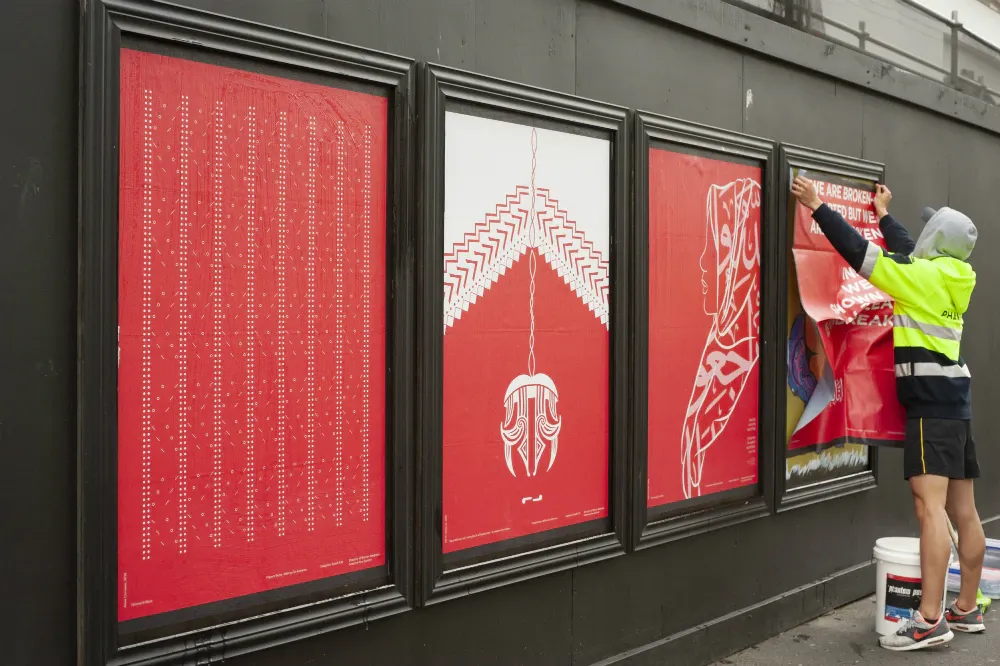
Present Tense at Britomart. Image - Bruce Connew.
Facing the traffic at Britomart, the posters started rotating every Wednesday from 18 September, for four weeks to 16 October. The project launched at Ramp Gallery Hamilton and has also been shown in Dunedin and Kaikohe. It moves on to Ilam Campus Gallery Christchurch 3 October and Enjoy Gallery Wellington 23 October. All of the works can be seen online here.
Poet, architect and artist Elisapeta Heta is among those in Present Tense. She spoke to Britomart’s Jeremy Hansen about the project. Elisapeta is currently collaborating with photographer John Millar on a project for next year’s Sydney Biennale. Elisapeta can also be heard in conversation on this Indigenous Urbanism Podcast from 2018
Meanwhile in the theatre world, 2018’s rallying call around gender representation circled around the Pop-Up Globe’s programming. They continue to redress, announcing this week that the 700-seater Pop-Up’s final New Zealand production in March 2020 (before heading overseas) will be the critically acclaimed 2018 play Amelia by Morgan Lloyd Malcolm, which premiered with the London Globe, and comes to NZ ahead of other places outside the UK (media release on Theatreview).
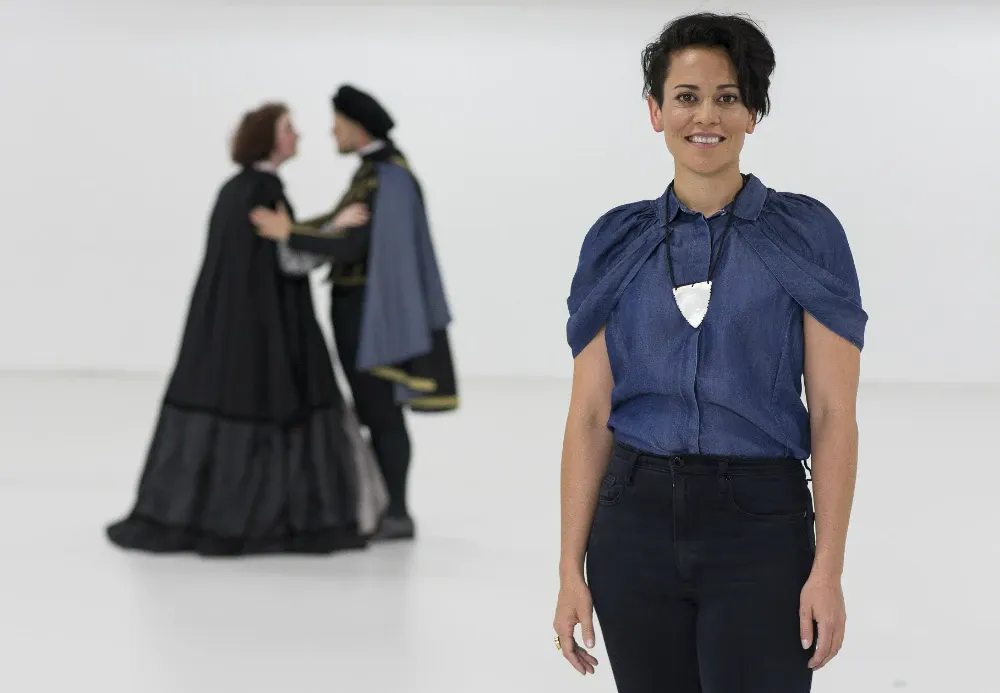
Miriama McDowell - Pop-Up Globe.
The play is about Shakespearian London feminist writer Emilia Bassano, a woman whose voice was lost. An all-female production will be lead by Miriama McDowell as director.
Meanwhile, as Theatrescenes reviews, the patriarchy is well and truly being dismantled on stage with Reclamation at Auckland’s Basement Theatre.
Dancing around Funding
An arts sector organisation not receiving a boost of funding from Creative New Zealand this year was long-time dance support organisation DANZ. Previously a Totara organisation - with funding this year of $350,000 per annum - they have been dropped from the investment funding portfolio.
Former director Tanya Kopytko writes on Theatreview: “Why has DANZ received this damning response from Creative New Zealand? It has gone from Totara funding to what? Nothing? DANZ produces our only national dance magazine, provides career and development tailored mentoring to diverse dance organisations and practitioners, advocates broadly on the significance of dance as an essential universal human expression as well as cultural and art form and co-ordinates, supports and collaborate on innovative dance events and strategic initiatives.”
DANZ’s executive director Sheryl Lowe told me this week that they were “hugely disappointed” with the news, which came “with no warning” but are working actively with CNZ and other partners and hope to have news soon. DANZ, as they write in their newsletter. are welcoming any input as they “pursue forward support for delivering and growing services that the New Zealand dance sector fully deserves.”
Creative New Zealand confirmed to The Big Idea that DANZ will be receiving funding support until the end of June 2020: “organisations that aren’t continuing in the investment programme receive a six month extension at 75 percent of their current funding level, and are able to apply for all Arts Grants funding (including all rounds closing this year) as well as other Creative New Zealand funding, relevant criteria permitting.” Arts Grants it should be noted are for amounts up to $75,000 - quite some drop. Support and input is being much welcomed by DANZ danz@danz.org.nz.
In other CNZ related dance news online RNZ’s Lynn Freeman spoke to choreographer Tupe Lualua this week. Tupe is currently Creative New Zealand's Sāmoa Artist in Residence and her dance company Le Moana Tupe is researching the role of the taule’ale’a and the aumaga (the social class of ‘untitled men’) in Sāmoa, working with young men. Tupe has been travelling to Samoa to work in dance with communities and schools for years now and you can see some of this impressive work in video here. Tupe hopes to bring some of the young men she has been training to New Zealand to perform after the work premieres in Samoa in November.
New Views Replacing Crook Cook
Replacing the ‘Crook Cook’ statue (as it has been dubbed locally, and since retired to Tairāwhiti Museum) this week were two works by Nick Tupara (Gisborne Herald story here). The first on Titirangi Kaiti Hill above Tairāwhiti/Gisborne is a 10 metre high disc steel sculpture representing significant tipuna Te Maro. The second sculpture, at Puhi Kai Iti Cook Landing Site, represents Te Ikaroa a Rauru (the long fish of Rauru), the waka from Hawaiki. The Cook statues at both sites have been consistently ‘altered’ by the public, even once given a white bikini.
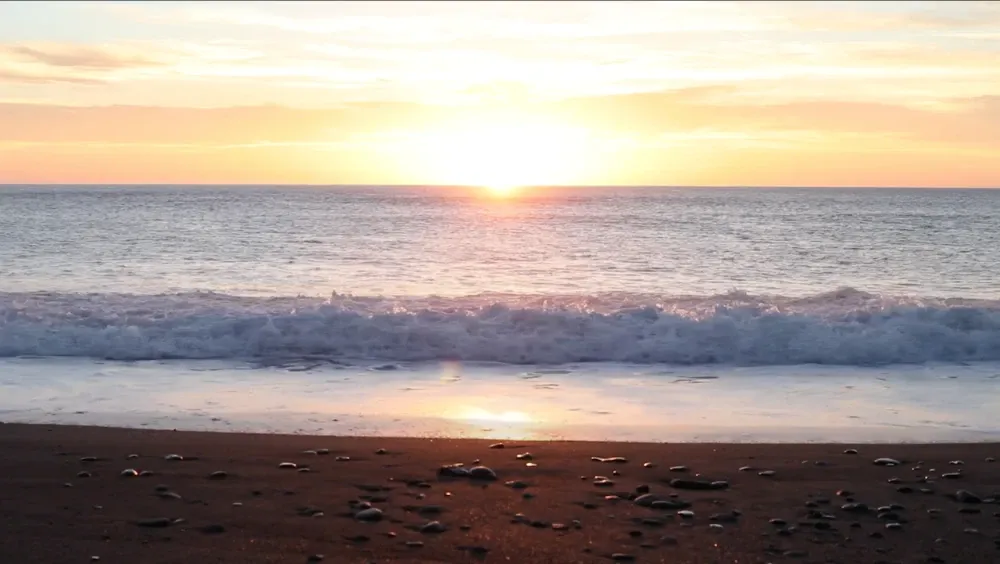
Mauri Tu, The first breath of Light. Chevron Hassett.
Speaking of the East Coast, one of my favourite experiences last week was getting to talk to Ngāti Porou artist Chevron Hassett for Circuitcast podcast. Chevron has a work screening in Newtown next to the ‘New World’ supermarket currently: a view from the East Cape shoreline of the sun rising from close to Cook’s Landing place, looking out towards Hawaiki.
Chevron notes that pretty much as many Māori live in Sydney today as they do Wellington, yet this is the first exhibition I’m aware of about the contemporary Māori experience in Sydney. Chevron has brought Kōhanga together from extensive conversation with the Sydney community with Wellington curator Robert Laking at First Draft Gallery, Wooloomooloo (Australia’s longest run artist run space).
Chevron is super busy right now with a residency at Wellington’s Toi Poneke wrapping up with an exhibition, a show at the Dowse and - as he tells me on the podcast - a plan to put his work - which gives image to the urban Māori experience - on Wellington buses.
Best of the web
This week we remember children’s author Jack Lasenby who died on Friday, aged 88. Jack won the Prime Minister’s Award for Literary Achievement in 2014. Margaret Mahy once said of Jack that he was "perhaps the most innately New Zealand writer of all New Zealand writers for children." Here’s a report from RNZ.
When Christchurch Library asked Jack his advice for aspiring writers he wrote: “Read. Think. Read. Work. Read. Live. Read. Have children. Read. Teach. Read. Learn to spell, learn grammar, learn handwriting, keyboard skills, and practise writing every day. Ignore people who say spelling, grammar, handwriting don’t matter. Learn to be your own best critic. And read, read, read.”
Great to see Liz Gunn continue to pull out video interviews with theatre artists. Here’s Sananda Chatterjee of Prayas Theatre about their upcoming First World Problems 2.0, at Auckland’s Basement October 15.
Props inhouse to The Big Idea’s ‘Advice to My 22 Year Old Self’ column which continues to deliver pearls of wisdom from our artists. The latest is from painter Kelcy Taratoa who has a survey exhibition at Tauranga Art Gallery opening October 5.
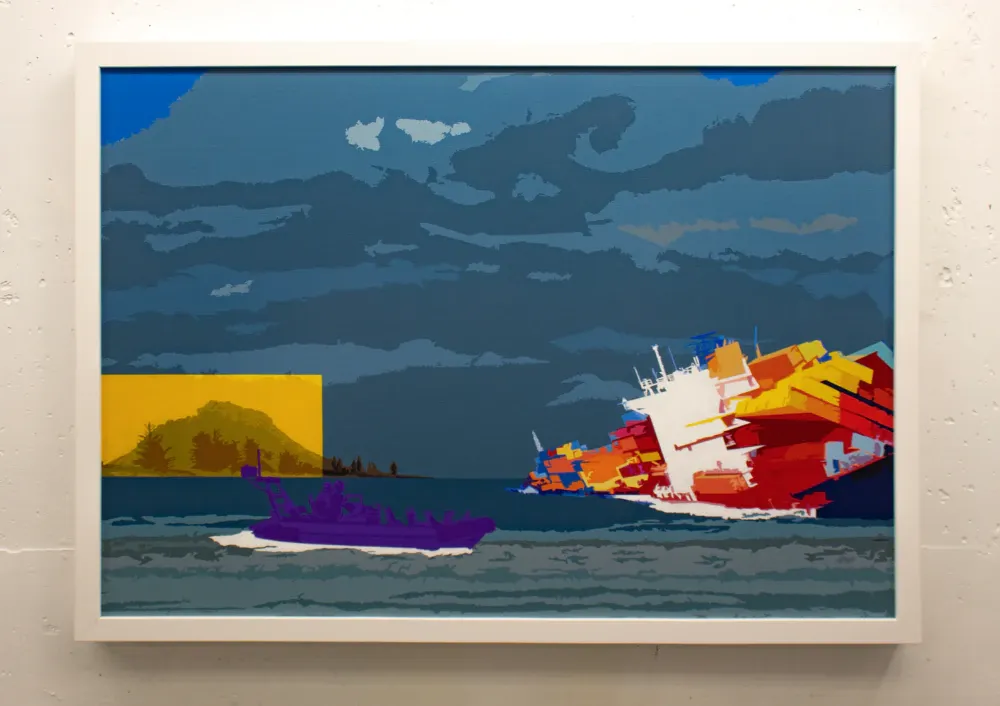
Kelcy Taratoa, Painted History not that long ago, 2017, courtesy of Jann Medlicott.
Also from Tauranga, this report in with photos from Rosalie Liddle at Sun Live on bold new dealer gallery Sumer and last weekend’s cuckooing by Michael Lett Gallery with a group exhibition.
Newsroom have an extract from Witi Ihimaera’s new memoir about his apprenticeship as the first Māori writer to have his fiction published in New Zealand, with Noel Hilliard.
There is also an interesting interview at the conclusion of Arts Month with Creative New Zealand’s CEO Stephen Wainwright. On engaging youth in the arts he says in the interview with comms company Brown Bread “the first thing we do is check our assumptions and hand over some power. Give people a chance to get on with it in a way that they think is the right way.”

